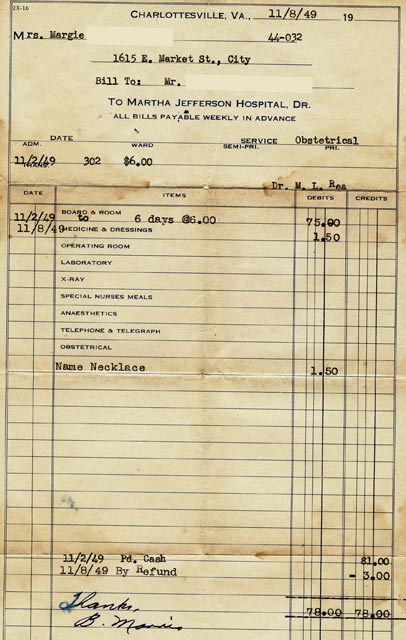For the first time, the federal government will release the prices that hospitals charge for the 100 most common inpatient procedures. Until now, these charges have been closely held by facilities that see a competitive advantage in shielding their fees from competitors.
Posted by Sarah Kliff and Dan Keating on May 8, 2013 at 12:01 am
Consumers on Wednesday will finally get some answers about one of modern life’s most persistent mysteries: how much medical care actually costs.
For the first time, the federal government will release the prices that hospitals charge for the 100 most common inpatient procedures. Until now, these charges have been closely held by facilities that see a competitive advantage in shielding their fees from competitors. What the numbers reveal is a health-care system with tremendous, seemingly random variation in the costs of services.
Having trouble viewing this on your phone? See the full graphic here.
In the District, George Washington University’s average bill for a patient on a ventilator was $115,000, while Providence Hospital’s average charge for the same service was just under $53,000. For a lower joint replacement, George Washington University charged almost $69,000 compared with Sibley Memorial Hospital’s average of just under $30,000.
Virginia’s highest average rate for a lower limb replacement was at CJW Medical Center in Richmond, more than $117,000, compared with Winchester Medical Center charging $25,600 per procedure. CJW charged more than $38,000 for esophagitis and gastrointestinal conditions, while Carilion Tazewell Community Hospital averaged $8,100 in those cases.
Maryland has a unique system for hospital rate charges, so differences were smaller, and its average rate was lower than that of any other state in the most common procedures reviewed by The Washington Post. The highest average charge for a lower joint replacement was $36,000 by University of Maryland Medical Center in Baltimore, much lower than the highest rates in other states.
Elsewhere, Las Colinas Medical Center just outside Dallas billed Medicare, on average, $160,832 for lower joint replacements.
Five miles away and on the same street, Baylor Medical Center in Irving, Tex., billed the government an average fee of $42,632.
In downtown New York City, two hospitals 63 blocks apart varied by 321 percent in the prices they charged to treat complicated cases of asthma or bronchitis. One charged an average of $34,310; the other billed, on average, $8,159.
Experts attribute the disparities to a health system that can set prices with impunity because consumers rarely see them — and rarely shop for discounts. Although the government has collected this information for years, it was housed in a bulky database that researchers had to pay to access.
The hospital charges being released Wednesday — all from 2011 — show the hospitals’ average list prices. Adding another layer of opacity, Medicare and private insurance companies typically negotiate lower charges with hospitals. But the data shed light on fees that the uninsured could pay.
READ: The government’s data on hospital charges
“It’s true that Medicare and a lot of private insurers never pay the full charge,” said Renee Hsia, an assistant professor at the University of California at San Francisco Medical School whose research focuses on price variation. “But you have a lot of private insurance companies where the consumer pays a portion of the charge. For uninsured patients, they face the full bill. In that sense, the price matters.”
Hospitals contend that these prices, which come from a master list known as a “chargemaster,” are rarely relevant to consumers. Hospitals often provide assistance to uninsured patients in paying their bills.
“The chargemaster can be confusing because it’s highly variable and generally not what a consumer would pay,” said Carol Steinberg, vice president at the American Hospital Association. “Even an uninsured person isn’t always paying the chargemaster rate.”
The public release of the data is part of an effort by Medicare to increase transparency in the health system. The agency will announce Wednesday new funding for data centers that can analyze and publish research on health-care prices.
“Historically, the mission of our agency has been to pay claims,” said Deputy Medicare Administrator Jonathan Blum. “We’ll continue to pay claims, but our mission has also shifted to be a trusted source in the marketplace for information. We want to provide more clarity and transparency on charge data.”
Hospitals nationwide showed a large variation for many common procedures.
For joint replacements, which are the most common hospital procedure for Medicare patients, prices ranged from a low of $5,304 in Ada, Okla., to $223,373 in Monterey, Calif. The average charge across the 427,207 Medicare patients’ joint replacements was $52,063.
Similar variation showed up for hospitals that treated particularly complicated cases of heart failure. At the high end, a hospital in Newark charged Medicare $173,250. At the low end, a hospital in western Tennessee submitted a bill for $7,304.
Treating a simple case of pneumonia, with no complications, cost $124,051 in Philadelphia and $5,093 in Water Valley, Miss., with an average charge of $24,549.
“There’s tremendous variation between hospitals,” Blum said. “Geography doesn’t seem to explain it.”


